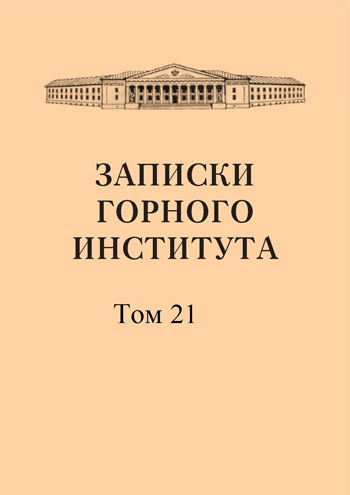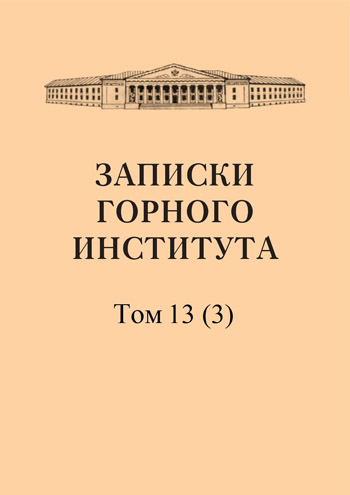-
Date submitted1945-07-10
-
Date accepted1945-09-06
-
Date published1946-06-29
On the organization of mine surveying measurements of coal deposits
- Authors:
- D. A. Kazakovskii
Conceptually, the task of surveying measurements is simple, however, its practical solution, provided that the necessary accuracy is ensured, in a number of cases becomes complex and requires the use of special techniques. This task becomes especially difficult in the conditions of deposits of non-metamorphosed platform-type coals, characterized by a complex structure of seams, variability in thickness, ash content and volumetric weight, and intense weathering of coal during storage in piles. In 1944, we carried out work to study the issue of surveyor measurements at the Cheremkhovo field (Irkutsk basin), which is a field of this type. The results obtained, which we want to share in this article, can be successfully used in a number of other fields. Since during surveying measurements under the conditions under consideration the most difficult thing is to accurately determine the volumetric weight of coal, we will focus on the results of our work on this issue.
-
Date submitted1945-07-19
-
Date accepted1945-09-13
-
Date published1946-06-29
On the possibility of development of open works in Cheremchovo deposit
- Authors:
- A. I. Serd
The Cheremkhovo coal deposit in the Irkutsk basin is one of the deposits where open-pit coal mining is possible on a large scale. The geological structure of the deposit favors the quarrying of many sections of its large reserve explored area.
-
Date submitted1945-07-02
-
Date accepted1945-09-13
-
Date published1946-06-29
Determination of stresses in hoist ropes for low ascent and descent heights
- Authors:
- N. P. Neronov
The problem of determining stresses in lifting ropes and the question of longitudinal vibrations of elastic rods, related to it in formulation and methods of solution, have a long history, set out in a recently published monograph by Prof. A. S. Lokshina. As early as 1815, Poisson studied the free vibrations of a prismatic rod with a weight at the end. Without setting out to list all the works that were closest in time, we note Boussinesq’s research on the impact of a body of a certain mass on a conical rod of infinite length, as well as the memoirs of Saint-Venant, who studied the impact of two prismatic and conical rods. The same authors also considered, among other related issues, the question of longitudinal vibrations of a rod with a load at the end. The main results of these authors are presented in the famous book by A. Love.
-
Date submitted1945-07-10
-
Date accepted1945-09-28
-
Date published1946-06-29
Classification of ore mining systems
- Authors:
- N. I. Trushkov
Due to the differences not only in the methods themselves and their details, but also in the principles of development of ore and coal deposits, drawing up a single classification of development systems for both is impractical. An attempt to compile such a general classification turned out to be unsuccessful due to complexity and contradictions, and the proposed classifications, to the detriment of one of the specialties, ore or seam, were practically unacceptable. For ore mining systems, which have long been an independent and most important branch of mining in the national economy of the Union, a simple independent classification of ore mining methods is necessary.
-
Date submitted1945-07-14
-
Date accepted1945-09-11
-
Date published1946-06-29
The importance of Rate of Advance of second Workings
- Authors:
- V. D. Slesarev
The rate of advance of the faces, as is known, is of great importance not only from the point of view of the productivity of one or another section, but also from the point of view of work safety, facilitating the conditions for controlling rock pressure (roof control), as well as saving the consumption of fastening materials. The speed of advance is very important when developing adjacent layers.
-
Date submitted1945-07-11
-
Date accepted1945-09-02
-
Date published1946-06-29
Complex classification of loading machines
- Authors:
- N. V. Filatov
The existing classifications of bulk machines are based on external features and, being formal and one-sided in nature, do not allow revealing all the features of various designs. The proposed classification is based on taking into account the entire complex of conditions affecting the shape and operation of machines. It takes into account the organization and technology of processes accompanying bulk loading; design features of machines capable of performing operations in one action or in parts; other natural conditions. Therefore, it opens up wide opportunities for improving old and creating new machines, as well as for improving the way they are used.
-
Date submitted1945-07-16
-
Date accepted1945-09-25
-
Date published1946-06-29
of the Bukuk orebody
- Authors:
- V. V. Ozerov
The geological structure of the Bukuka deposit includes sedimentary and metamorphosed sandstones, conglomerates and shales of Middle Jurassic age, ancient coarse-grained porphyritic granite, quartz diorite, medium-grained biotite granodiorite and vein rocks represented by quartz porphyrite, quartz diorite porphyry, aplites and pegmatites.
-
Date submitted1945-07-20
-
Date accepted1945-09-22
-
Date published1946-06-29
The 70-years anniversary of the academician A. P. German
November 2, 1944 marked the 70th anniversary of the birth of one of the largest specialists in the field of mining mechanics, Academician Alexander Petrovich German.


